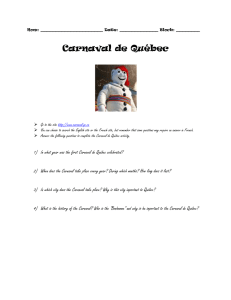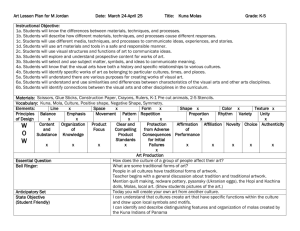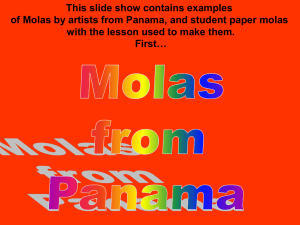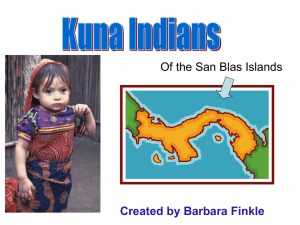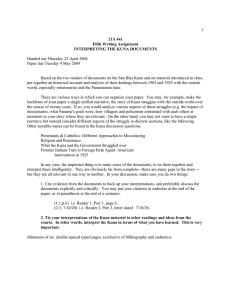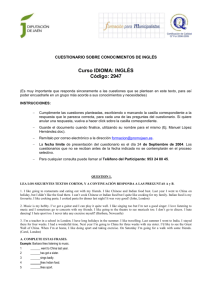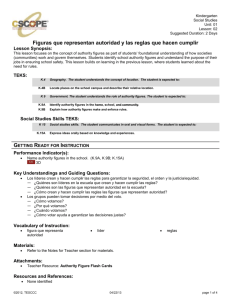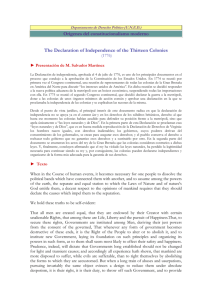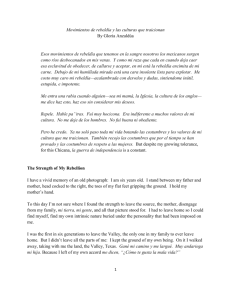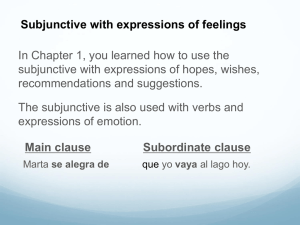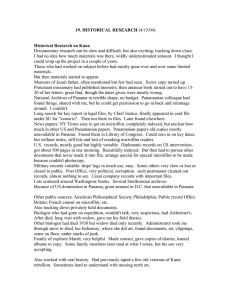Carnaval - Bienvenidos a las clases de la Sra. Mardos
advertisement
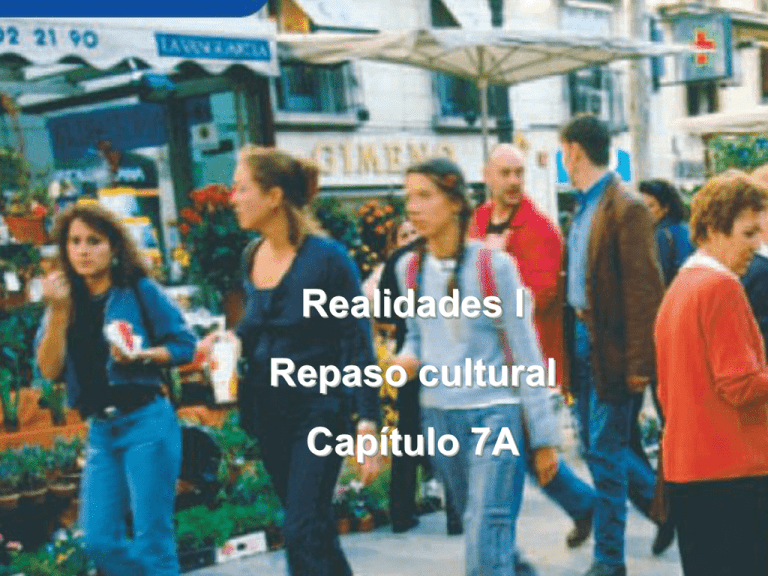
Realidades I Repaso cultural Capítulo 7A El joven de la garibaldina roja (Autorretrato 1919) • Joan Miró (1893–1983) was born near Barcelona, Spain. He painted this selfportrait in 1919, when he was 26 years old. Here he portrays himself wearing a garibaldina, or cardigan, a collarless sweater or jacket that buttons in the front. Garibaldinas were popular at the time, and they were usually red, a color that makes this portrait even more intense. • How do fashions change across time, or from culture to culture? Give three examples. Familia (1989) • Fernando Botero (1932– ) is a very famous artist from Medellín, Colombia. His paintings and sculptures feature people and objects that are puffed up to an exaggerated size. The figures celebrate life while at the same time making fun of what they represent. • What statement might an artist like Botero be making when his artwork presents humorous portrayals of politicians and prominent people? Bolivia – boliviano (BOB) The Currencies Peru – Nuevo sol (sl) Costa Rica: colón (¢) Latin America: cents = centavos o céntimos • The currencies of Bolivia, Peru, and Costa Rica are all different. Latin American countries have special names for their national currency and use different symbols as abbreviations. • The images on the printed money honor each country’s history and culture. Pronunciación The letter z • In most Spanish-speaking countries, the letter z sounds like the s in see. Listen to and say these words: zapato arroz izquierda haz almuerzo razón cabeza nariz quizás azul • In many parts of Spain, however, the letter z is pronounced like the th in think. Listen to the words as a Spaniard says them and practice saying them as if you were in Spain. Try it out! Listen to “En la puerta del cielo” (“At Heaven’s Gate”), a traditional poem from Puerto Rico. Then say the poem aloud. En la puerta del cielo, venden zapatos para los angelitos que andan descalzos. Exploración del lenguaje Nonverbal language • You’ve learned about the gesture ¡Ojo!, which means “be careful.” Another common gesture used by Spanish speakers conveys the meaning of “a lot of money.” • This gesture is made by holding the hand palm-up and rubbing the fingertips together. • It is often accompanied by expressions such as ¡Cuesta muchísimo! or Es mucho dinero. It can even be used when you’re describing someone who is rich. Carolina Herrera • Carolina Herrera is one of the world’s leading fashion designers. • The clothes, perfume, and accessories by this Venezuelan designer are worn by some of the world’s most elegant women. She is one of many creative Spanishspeaking designers who are making their mark in the fashion world. • Think of the names of some fashion designers from the United States. In what ways do you think they influence everyday culture? El español en la comunidad • Locate a store in your community or on the Internet that sells products from Spanishspeaking countries. • Visit the store or Web site and list the types of items you find there. Are they similar to the items listed in the ad? Bring your list to class and compare it with other students’ lists. What are the most common types of items found in these stores? La pollera • Una tradición panameña de mucho orgullo es llevar el vestido típico de las mujeres,“la pollera.” • Hay dos tipos de pollera, la pollera montuna y la pollera de gala, que se lleva en los festivales. • La pollera de gala se hace a mano y cuesta muchísimo por la cantidad de joyas que adornan el vestido. • ¿Cuánto cuesta una pollera de gala? Puede costar unos 1.850 dólares americanos, y requiere aproximadamente siete meses de trabajo. • La pollera es tan importante que en la ciudad de Las Tablas celebran el Día Nacional de La Pollera el 22 de julio. Carnaval • Carnaval is a traditional celebration in many Latin American countries. It takes place in the weeks before the season of Lent. • Carnaval normally includes the coronation of a beauty queen, parades, elaborate costumes, street music, and dancing. • The Carnaval in Las Tablas, a town near the Pacific coast in Panama, is very popular and attracts thousands of visitors every year. • What traditional parades or celebrations take place in your community? How do they compare to the celebration of carnaval? Las molas • • • Molas are the bright fabric artwork created by the Kuna Indians of the San Blas Islands, a group of islands off the Panama coast in the Caribbean Sea. Mola is a Kuna word meaning “blouse.” This art form was originally used to make clothing, but today the term mola refers to any piece of fabric made using this method. Kuna women cut out a cloth pattern and sew it onto layers of cloth that have been sewn together. Pieces of the upper layers are cut away to expose the underlying colors and create a design. Later, the women embroider details. Many designs on molas represent nature or animals. Each mola may take many weeks to complete. ¡El fin!

